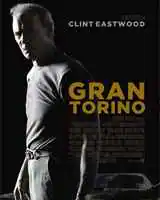Clint Eastwood's Gran Torino is a film that resonates with audiences on multiple levels. It tells the story of Walt Kowalski, a Korean War veteran who finds himself in a rapidly changing world. Set against the backdrop of a multicultural neighborhood in Detroit, this movie explores themes of prejudice, redemption, and unexpected friendships.
The talented cast brings depth and authenticity to the narrative, making it a memorable cinematic experience. From Clint Eastwood's portrayal of the gruff yet vulnerable Walt Kowalski to the fresh faces like Bee Vang, who plays the pivotal role of Thao, each actor contributes significantly to the film's impact. Let's delve into the details of the actors and their roles that make Gran Torino such a compelling watch.
Exploring the Heart of Gran Torino
Gran Torino, directed by Clint Eastwood, features an ensemble cast that brings the story to life with remarkable performances. The film showcases the journey of Walt Kowalski, a retired autoworker and Korean War veteran, as he navigates through his prejudices and forms unlikely bonds within his community. The movie’s setting in Detroit provides a rich backdrop for exploring themes of cultural change and personal growth.
Eastwood not only directs but also stars as the lead character, delivering a nuanced performance that captures the complexity of Walt’s personality. His portrayal highlights the struggles faced by individuals caught between tradition and progress. Through Walt’s interactions with his Hmong neighbors, the film delves into issues of race, identity, and mutual respect.
Christopher Carley joins the cast as Father Janovich, adding another layer to the narrative. His character represents compassion and understanding, serving as a bridge between Walt and the younger generation. Together, these characters create a tapestry of human experiences that resonate deeply with viewers.
Behind the Scenes: Crafting Authenticity
The choice of Detroit as the primary filming location was deliberate and meaningful. This decision enhanced the authenticity of the film by immersing the audience in a real-world environment. The city’s industrial history and current socio-economic landscape provide a tangible context for the story unfolding on screen.
Bee Vang, one of the standout performers from the Hmong community, adds authenticity to the film. His return to acting after a hiatus further underscores the importance of diverse representation in cinema. By casting actors from the actual communities depicted in the film, Eastwood ensures that the portrayals are genuine and respectful.
American Humane's involvement in monitoring animal safety during production reflects the commitment to ethical filmmaking practices. Such collaborations help maintain high standards while promoting positive messages about the human-animal bond. These efforts contribute to the overall quality and integrity of the final product.
Revisiting the Impact of Gran Torino
Aspiring actors and panelists discussing their experiences related to Gran Torino offer valuable insights into its lasting influence. Bee Vang's approach to preparing for his role mirrors academic diligence, emphasizing the dedication required to excel in both fields. His methodical study of the script parallels the rigorous preparation needed for medical studies.
Critical reviews highlight Clint Eastwood's ability to extract powerful performances from a relatively small cast. Tim Brayton's analysis praises the effectiveness of using limited resources to convey profound messages. Despite its modest scale, the film manages to tackle significant social issues with clarity and conviction.
Fred Rowson describes Gran Torino as a work that challenges conventional narratives about race and morality. While maintaining its gritty realism, the film offers moments of humor and warmth that enrich the viewing experience. Ultimately, it leaves audiences reflecting on the complexities of human nature and the potential for transformation.

